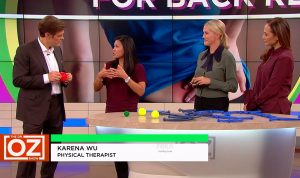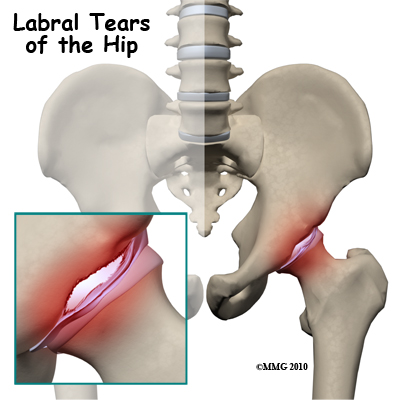By Karena Wu, as published in Total Food Service.

Lately, I’ve seen a lot of clients with hip and back issues. The low back and the hip are neighboring joints that help each other out and at times can be indistinguishable in determining the source of pain. You can experience pain in the hip or glutes (aka the butt) but it can be coming from the low back. You can experience low back pain that is actually stemming from the hip. Either way, when the low back and hip are out of whack, it makes for a difficult time doing your daily routine, especially if you are on your feet doing prep work and then service. That makes for a long and uncomfortable day in the restaurant industry.
The hip joint sits deep in the pelvis, under the gluteal muscles. There are layers of muscles that support, control and move the hip. This joint is a ball and socket joint, like a golf ball on a tee. It is a weight-bearing joint that is closely intertwined with the low back and this area is a necessary support and foundation to our bodies. It is sturdy and can take a lot of impact but if it is too much or it is just in the wrong place at the wrong time, it can give out on us. And that is when you get what is called a labral tear in the hip.
The labrum is a cartilaginous piece that sits like a ring on the rim of the hip socket. This socket is actually part of the pelvis that is called the acetabulum. The labrum exists to provide stability to this ball and socket joint. It is connected to the joint capsule and helps to close off the joint and encapsulate it, both for joint health and joint integrity. If it is damaged, the joint can degenerate from excessive shear, the axis of rotation can be off and the nutrition in the joint can be diminished. This repetitive micro-trauma can eventually lead to a macro-trauma within the joint.
Injury is the major cause of labral tears. Working in the kitchen takes its toll on the weight bearing structures in the legs, even if you are standing relatively still. But, start moving from station to station and you’ll get that repetitive trauma, possibly a macro-trauma if you slip and fall. So, repetitive motion or a single trauma are common causes. Structural changes (both congenital and functional, meaning you are either born with it or it changes from improper posture or use) can also cause damage and injury. Symptoms are pain deep in the hip joint or the groin, clicking, catching or locking, stiffness and weakness or instability. The pain is typically local but can also radiate into the buttocks, side of the hip and even down to the knee.

 ActiveCare Physical Therapy, PC
ActiveCare Physical Therapy, PC
